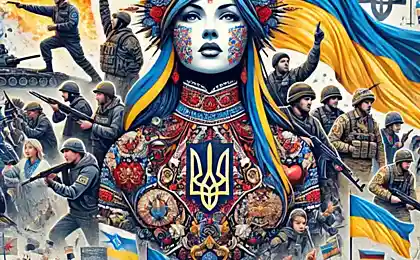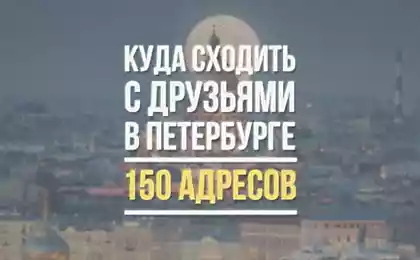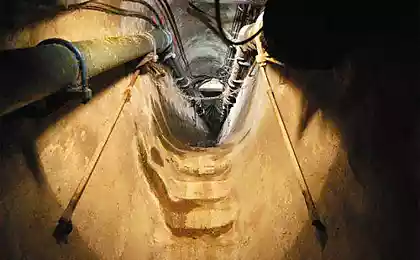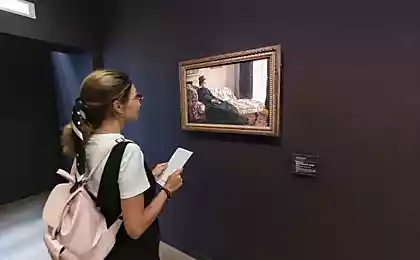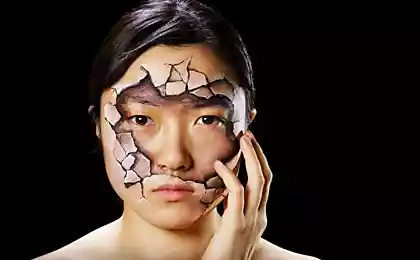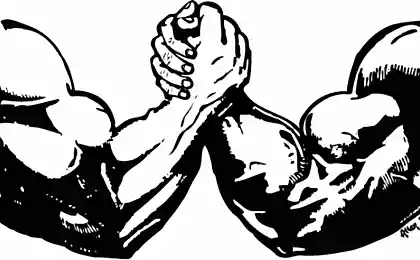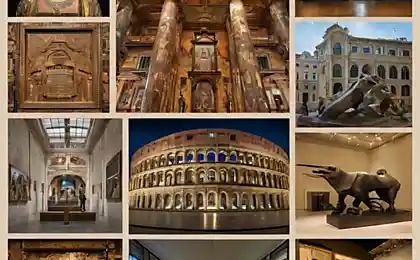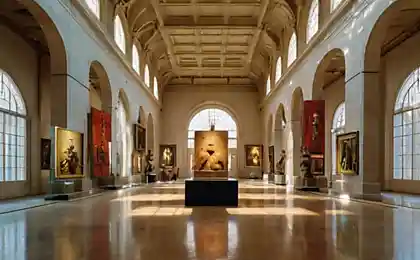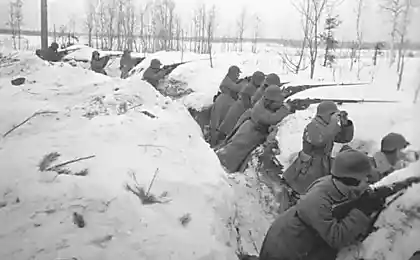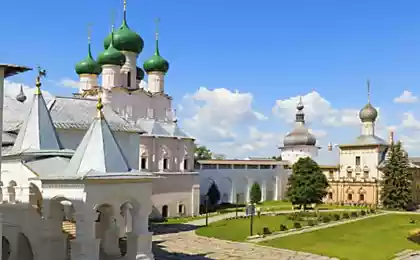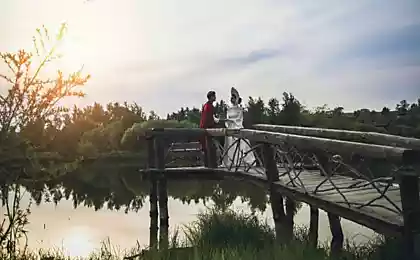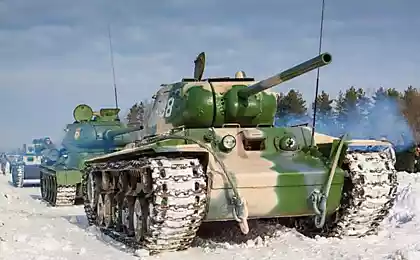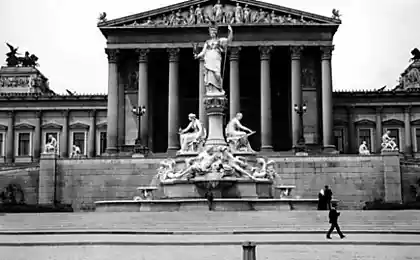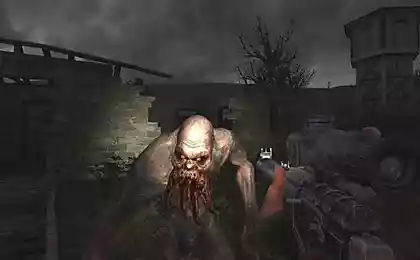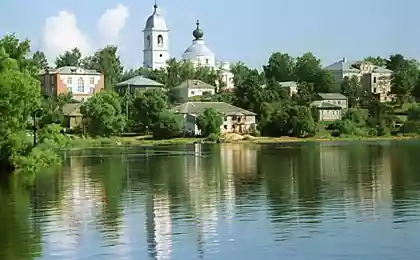236
The Finnish Museum recognized Ilya Repin as a Ukrainian artist and changed the signatures under his works
In late January, the famous realist artist Ilya Repin, who died 93 years ago, again excited the cultural community. The largest art museum in Finland, Ateneum, has updated information about the author of the Zaporozhye Cossacks in catalogs and in signatures under his works. Until recently, everyone thought that Ilya Repin “Weren’t Waiting” was a Russian film. In 2024, the artist was rightly recognized as a Ukrainian.

Ilya Repin: “We did not wait” The example of Ateneum was presented by other world museums They began to recognize Ukrainian artists who had previously been appropriated by Russia. Among them was the Crimean Ivan Aivazovsky and a native of Mariupol Arkhip Kuindzhi, whose Mariupol museum in 2022 was destroyed by the occupiers.
Six months before Russia’s full-scale invasion of Ukraine, the Finns held a large exhibition of Repin’s works together with the Tretyakov Gallery and the State Russian Museum. Then Lucas Stasevsky, a Finnish musician with Ukrainian roots, addressed the leadership of Ateneum with an important remark.
The activist noted that in the description for the exhibition Ilya Repin was designated as a Russian artist. He was born on the territory of modern Ukraine and had extensive ties with Ukrainian culture.
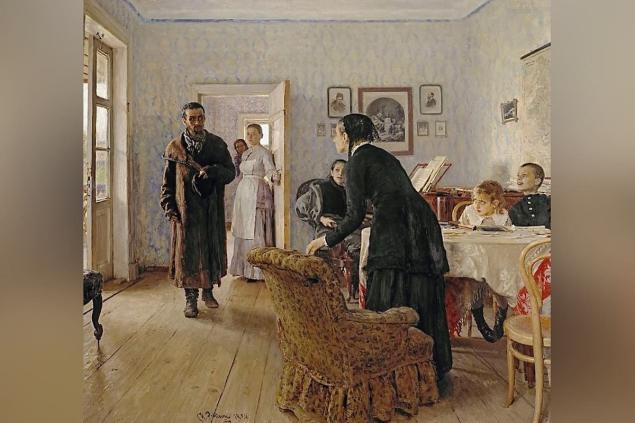
According to the curator of the museum Timo Guuscu, Ukrainian journalist Anna Lodygina helped clarify the situation. In early 2023, she approached Ateneum and asked for more information about her life in Finland. In response, Lodygina received an article where she noticed a mistake. Repin's parents were not Russian and were not born in the suburbs. The journalist provided a church document. According to him, Repin’s grandfather and father were Ukrainians.
Ateneum decided to change the artist’s citizenship two years after Stasevsky’s first request. Ilya Repin regained his true nationality.
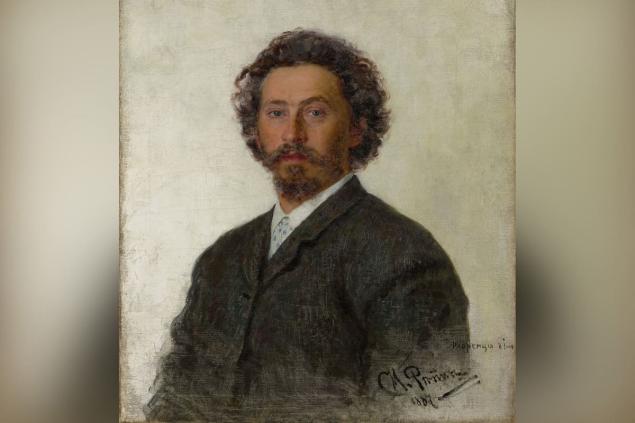
Instagram Repin or Ripin? According to official information, the artist was born in the city of Chuguev, Kharkiv region. Over time, his rather wealthy family became impoverished. Young Repin had to look for a job. At the age of 19, he went to St. Petersburg to study at the Academy of Arts.
Ilya Repin comes from an old Cossack family nicknamed Rip. That's where the name Ripin comes from. This explains the love of the Ukrainian to the subject of the Cossacks. Archival documents confirm that the ancestors of the artist on the line of his father and mother lived in Chuguev region from the XVII century and served in the Chuguev Cossack regiment.
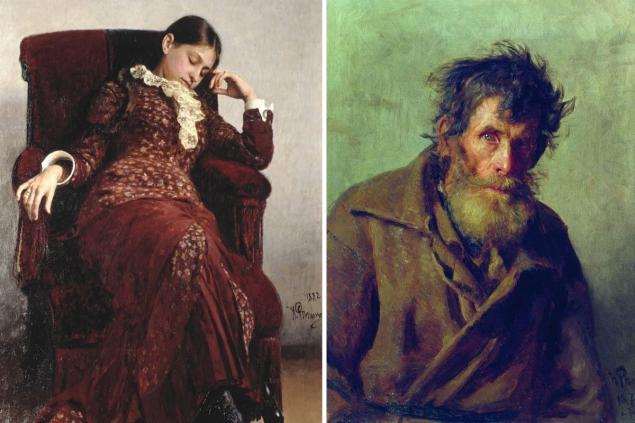
The master of the brush maintained relations with his homeland and conducted correspondence in Ukrainian with fellow countrymen - journalist Vladimir Gitlyarovsky, as well as historian and connoisseur of the Zaporozhye Sich Dmitry Yavornitsky. And his famous canvas “Zaporozhians write a letter to the Turkish sultan” hides a lot of pro-Ukrainian Easter eggs.
This painting was the artist’s response to the criminal Em decree of the tsarist power. In fact, he ousted the Ukrainian language from all spheres of life. And the real addressee of the Cossacks was the author of the decree - Emperor Alexander II. Look closely: in the background of the canvas you will find a rolled red-black and blue-yellow flag. As well as the traditional musical instrument of the Zaporozhians - domru - on the knees of one of the Cossacks.
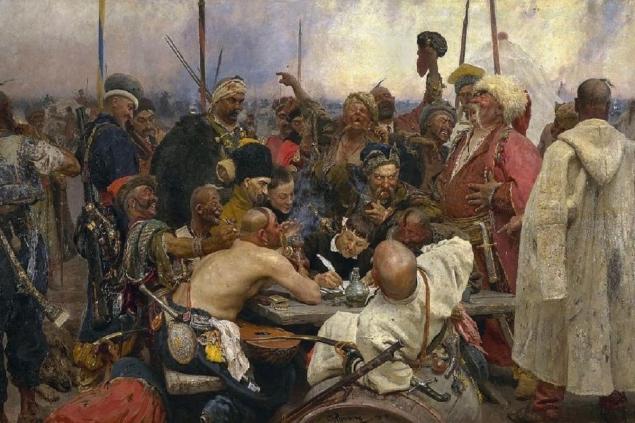
In 1899, Ilya Repin purchased land on the northern shore of the Baltic Sea in the village of Kuokkala. A picturesque secluded place to work. From there it was close to the St. Petersburg Academy of Arts, where Repin was appointed rector. Soon he will erect a legendary estate here with the Penata workshop. In 1917, after the collapse of Tsarist Russia, it will be under the jurisdiction of Finland. Later, again under Russian rule.
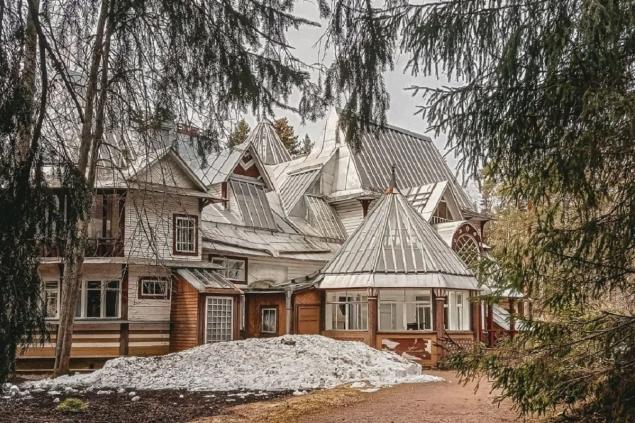
Finland’s independence after the October Revolution made Repin an immigrant. She found the 73-year-old artist a widower, with partial paralysis of his arm and loss of ties with his usual social circle, buyers and exhibitors.
But the master did not hurry to return to Russia. His attitude to the new Russian government is indicated by paintings, partly “The Red Army man takes bread from the child” and numerous personal letters. “As long as the Bolsheviks are in power, I do not want to have anything to do with Russia,” Repin wrote to friends. “They had a lot of gold in their hands, and all this was used for propaganda, and the starving were not taken care of. Europe could demand accountability for their actions. Shame on you to sit with them!

The same Bolshevik authorities confiscated the property of the famous artist in Russia. In late autumn 1939, when the Soviet Union invaded Finland, the residents of the Kuokkala border evacuated. Repin's children lived there after his father's death in 1930. They also left their father's "Penaty", taking the most valuable things.
Just a couple of months after Soviet soldiers entered, Ilya Repin’s estate was turned into a museum of the “great Russian artist.” But it didn't last long. During the war, the estate burned to the ground. At the end of the fighting it was rebuilt. “Penaty” became an object of cultural heritage of Russia and UNESCO.
Ilya Repin “Did not wait”, or Communication with Ukraine During his lifetime, the great artist dedicated dozens of paintings to his homeland: “Gaydamaki”, “Ukraine near the Tyn”, “Black Sea Volitsa”, “Vechornitsa”, “The Crosswalk in the Oak Forest”, several versions of “Zaporozhye”.
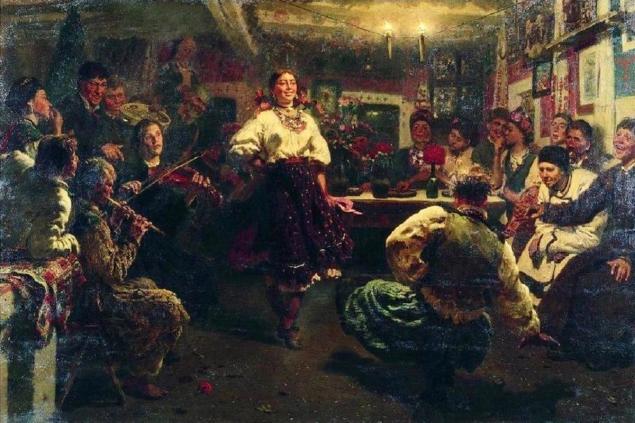
Repin even harbored the idea of opening his own art school in the Ukrainian Slobozhanshchina. I wanted to give young people more opportunities that I was deprived of in my youth. For this purpose, the artist planned to leave Finland and move to his homeland forever. But his plans were destroyed by the First World War.
Against all odds, the connection of the famous Ukrainian with his native land failed to interrupt either the war or the revolution. Perhaps this is where the irresistible power of art lies.

Ilya Repin: “We did not wait” The example of Ateneum was presented by other world museums They began to recognize Ukrainian artists who had previously been appropriated by Russia. Among them was the Crimean Ivan Aivazovsky and a native of Mariupol Arkhip Kuindzhi, whose Mariupol museum in 2022 was destroyed by the occupiers.
Six months before Russia’s full-scale invasion of Ukraine, the Finns held a large exhibition of Repin’s works together with the Tretyakov Gallery and the State Russian Museum. Then Lucas Stasevsky, a Finnish musician with Ukrainian roots, addressed the leadership of Ateneum with an important remark.
The activist noted that in the description for the exhibition Ilya Repin was designated as a Russian artist. He was born on the territory of modern Ukraine and had extensive ties with Ukrainian culture.

According to the curator of the museum Timo Guuscu, Ukrainian journalist Anna Lodygina helped clarify the situation. In early 2023, she approached Ateneum and asked for more information about her life in Finland. In response, Lodygina received an article where she noticed a mistake. Repin's parents were not Russian and were not born in the suburbs. The journalist provided a church document. According to him, Repin’s grandfather and father were Ukrainians.
Ateneum decided to change the artist’s citizenship two years after Stasevsky’s first request. Ilya Repin regained his true nationality.

Instagram Repin or Ripin? According to official information, the artist was born in the city of Chuguev, Kharkiv region. Over time, his rather wealthy family became impoverished. Young Repin had to look for a job. At the age of 19, he went to St. Petersburg to study at the Academy of Arts.
Ilya Repin comes from an old Cossack family nicknamed Rip. That's where the name Ripin comes from. This explains the love of the Ukrainian to the subject of the Cossacks. Archival documents confirm that the ancestors of the artist on the line of his father and mother lived in Chuguev region from the XVII century and served in the Chuguev Cossack regiment.

The master of the brush maintained relations with his homeland and conducted correspondence in Ukrainian with fellow countrymen - journalist Vladimir Gitlyarovsky, as well as historian and connoisseur of the Zaporozhye Sich Dmitry Yavornitsky. And his famous canvas “Zaporozhians write a letter to the Turkish sultan” hides a lot of pro-Ukrainian Easter eggs.
This painting was the artist’s response to the criminal Em decree of the tsarist power. In fact, he ousted the Ukrainian language from all spheres of life. And the real addressee of the Cossacks was the author of the decree - Emperor Alexander II. Look closely: in the background of the canvas you will find a rolled red-black and blue-yellow flag. As well as the traditional musical instrument of the Zaporozhians - domru - on the knees of one of the Cossacks.

In 1899, Ilya Repin purchased land on the northern shore of the Baltic Sea in the village of Kuokkala. A picturesque secluded place to work. From there it was close to the St. Petersburg Academy of Arts, where Repin was appointed rector. Soon he will erect a legendary estate here with the Penata workshop. In 1917, after the collapse of Tsarist Russia, it will be under the jurisdiction of Finland. Later, again under Russian rule.

Finland’s independence after the October Revolution made Repin an immigrant. She found the 73-year-old artist a widower, with partial paralysis of his arm and loss of ties with his usual social circle, buyers and exhibitors.
But the master did not hurry to return to Russia. His attitude to the new Russian government is indicated by paintings, partly “The Red Army man takes bread from the child” and numerous personal letters. “As long as the Bolsheviks are in power, I do not want to have anything to do with Russia,” Repin wrote to friends. “They had a lot of gold in their hands, and all this was used for propaganda, and the starving were not taken care of. Europe could demand accountability for their actions. Shame on you to sit with them!

The same Bolshevik authorities confiscated the property of the famous artist in Russia. In late autumn 1939, when the Soviet Union invaded Finland, the residents of the Kuokkala border evacuated. Repin's children lived there after his father's death in 1930. They also left their father's "Penaty", taking the most valuable things.
Just a couple of months after Soviet soldiers entered, Ilya Repin’s estate was turned into a museum of the “great Russian artist.” But it didn't last long. During the war, the estate burned to the ground. At the end of the fighting it was rebuilt. “Penaty” became an object of cultural heritage of Russia and UNESCO.
Ilya Repin “Did not wait”, or Communication with Ukraine During his lifetime, the great artist dedicated dozens of paintings to his homeland: “Gaydamaki”, “Ukraine near the Tyn”, “Black Sea Volitsa”, “Vechornitsa”, “The Crosswalk in the Oak Forest”, several versions of “Zaporozhye”.

Repin even harbored the idea of opening his own art school in the Ukrainian Slobozhanshchina. I wanted to give young people more opportunities that I was deprived of in my youth. For this purpose, the artist planned to leave Finland and move to his homeland forever. But his plans were destroyed by the First World War.
Against all odds, the connection of the famous Ukrainian with his native land failed to interrupt either the war or the revolution. Perhaps this is where the irresistible power of art lies.
Metropolitan Igor told when this year Maslenitsa and why we celebrate Easter in the old style
My wife started gaining weight and didn’t want to do anything about it, so I took extreme measures.
